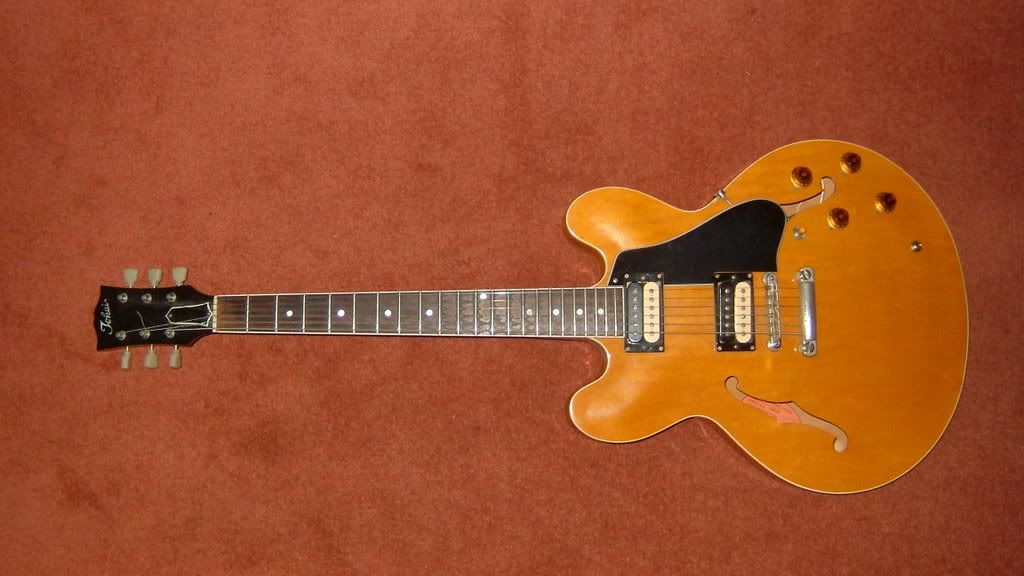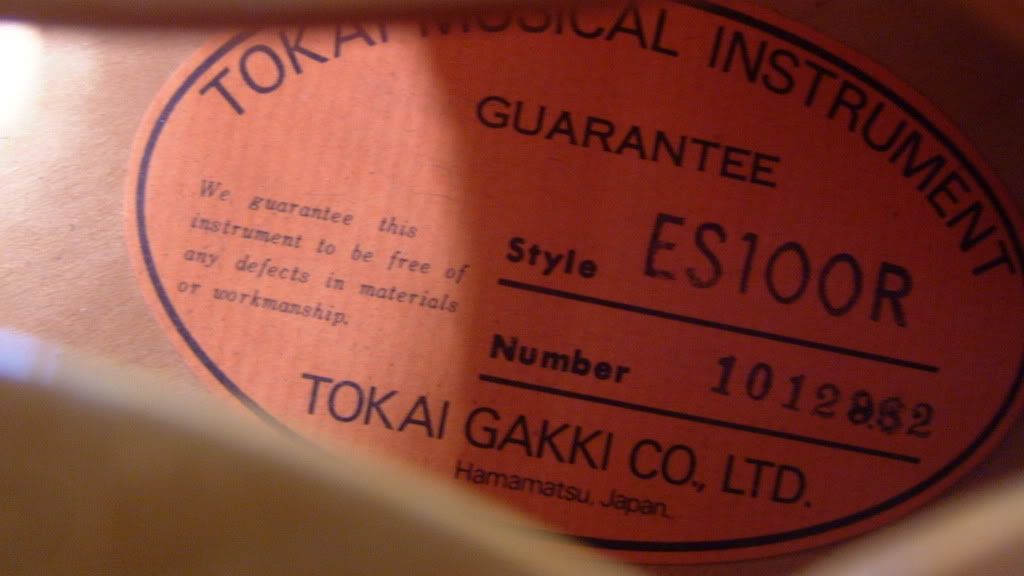unreasonablyturquoise
New member
- Joined
- Jun 4, 2007
- Messages
- 4
- Reaction score
- 0
Hi folks, this is my first time posting on these pages, so please be gentle. I know very little about Tokai history or reputation.
My father bought a tokai guitar about 15 years ago in Belfast, Northern Ireland. At the age of 13, I started to play guitar but found my fathers guitar too big and heavy for me and stubbornly went and bought myself a budget strat copy (ah... the folly of youth). My dad?s guitar was put into storage because generally he prefers to play acoustic guitar, and the tokai was soon forgotten about.
Since then I have owned several guitars (my main instrument being a Brian Moore which I?m very happy with), but recently I got to thinking about the old tokai again. So this weekend I dug it out and it looks beautiful. I feel terrible for having neglected it all these years. However there is surely a lot of work to put into this baby to get her to sing like the day she was made.
The thing is, I can find very little about this instrument on the internet and there are a couple of things I?m curious about. If anyone can answer these questions I would be eternally grateful.
1) In what year was this guitar manufactured? Are new tokai guitars as good as the old ones? Was this guitar made in a good era for Tokai?
2) What kind of pick-ups are in it? I find them a bit muddy, so if I decide to use this guitar more often, I would like to buy a new set. Is there any particular brand or type of pickup that could be recommended for a blues/rock tone on this guitar?
3) Can it be fitted with a Bigby style tremolo arm?
4) I see MIK and MIJ mentioned a bit on the boards. Has that got anything to do with my guitar.
5) Does anyone have any idea how much it?s worth?
6) Is there anywhere I can find a review of this model?
Please can someone help me with these? I can find bugger all answers on the web.
Style: ES100R
Number: 1012962
I?ve included some pictures of her below.
Cheers,
Dan (Ireland)


More images:
http://i184.photobucket.com/albums/x172/unreasonablyturquoise/1.jpg
http://i184.photobucket.com/albums/x172/unreasonablyturquoise/4.jpg
http://i184.photobucket.com/albums/x172/unreasonablyturquoise/5.jpg
http://i184.photobucket.com/albums/x172/unreasonablyturquoise/6.jpg
My father bought a tokai guitar about 15 years ago in Belfast, Northern Ireland. At the age of 13, I started to play guitar but found my fathers guitar too big and heavy for me and stubbornly went and bought myself a budget strat copy (ah... the folly of youth). My dad?s guitar was put into storage because generally he prefers to play acoustic guitar, and the tokai was soon forgotten about.
Since then I have owned several guitars (my main instrument being a Brian Moore which I?m very happy with), but recently I got to thinking about the old tokai again. So this weekend I dug it out and it looks beautiful. I feel terrible for having neglected it all these years. However there is surely a lot of work to put into this baby to get her to sing like the day she was made.
The thing is, I can find very little about this instrument on the internet and there are a couple of things I?m curious about. If anyone can answer these questions I would be eternally grateful.
1) In what year was this guitar manufactured? Are new tokai guitars as good as the old ones? Was this guitar made in a good era for Tokai?
2) What kind of pick-ups are in it? I find them a bit muddy, so if I decide to use this guitar more often, I would like to buy a new set. Is there any particular brand or type of pickup that could be recommended for a blues/rock tone on this guitar?
3) Can it be fitted with a Bigby style tremolo arm?
4) I see MIK and MIJ mentioned a bit on the boards. Has that got anything to do with my guitar.
5) Does anyone have any idea how much it?s worth?
6) Is there anywhere I can find a review of this model?
Please can someone help me with these? I can find bugger all answers on the web.
Style: ES100R
Number: 1012962
I?ve included some pictures of her below.
Cheers,
Dan (Ireland)


More images:
http://i184.photobucket.com/albums/x172/unreasonablyturquoise/1.jpg
http://i184.photobucket.com/albums/x172/unreasonablyturquoise/4.jpg
http://i184.photobucket.com/albums/x172/unreasonablyturquoise/5.jpg
http://i184.photobucket.com/albums/x172/unreasonablyturquoise/6.jpg












